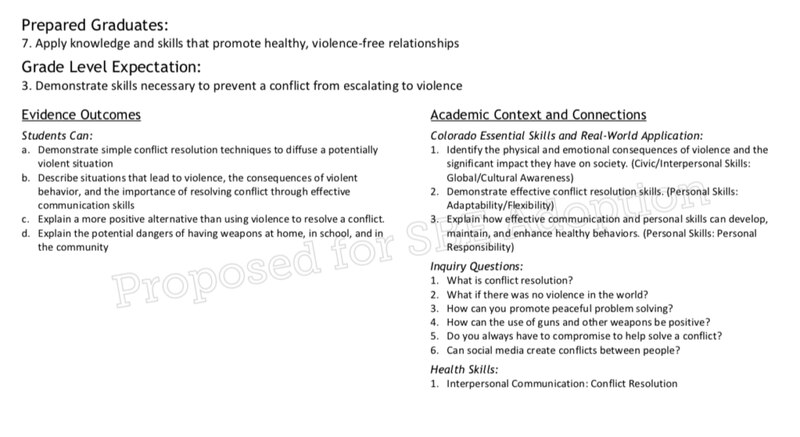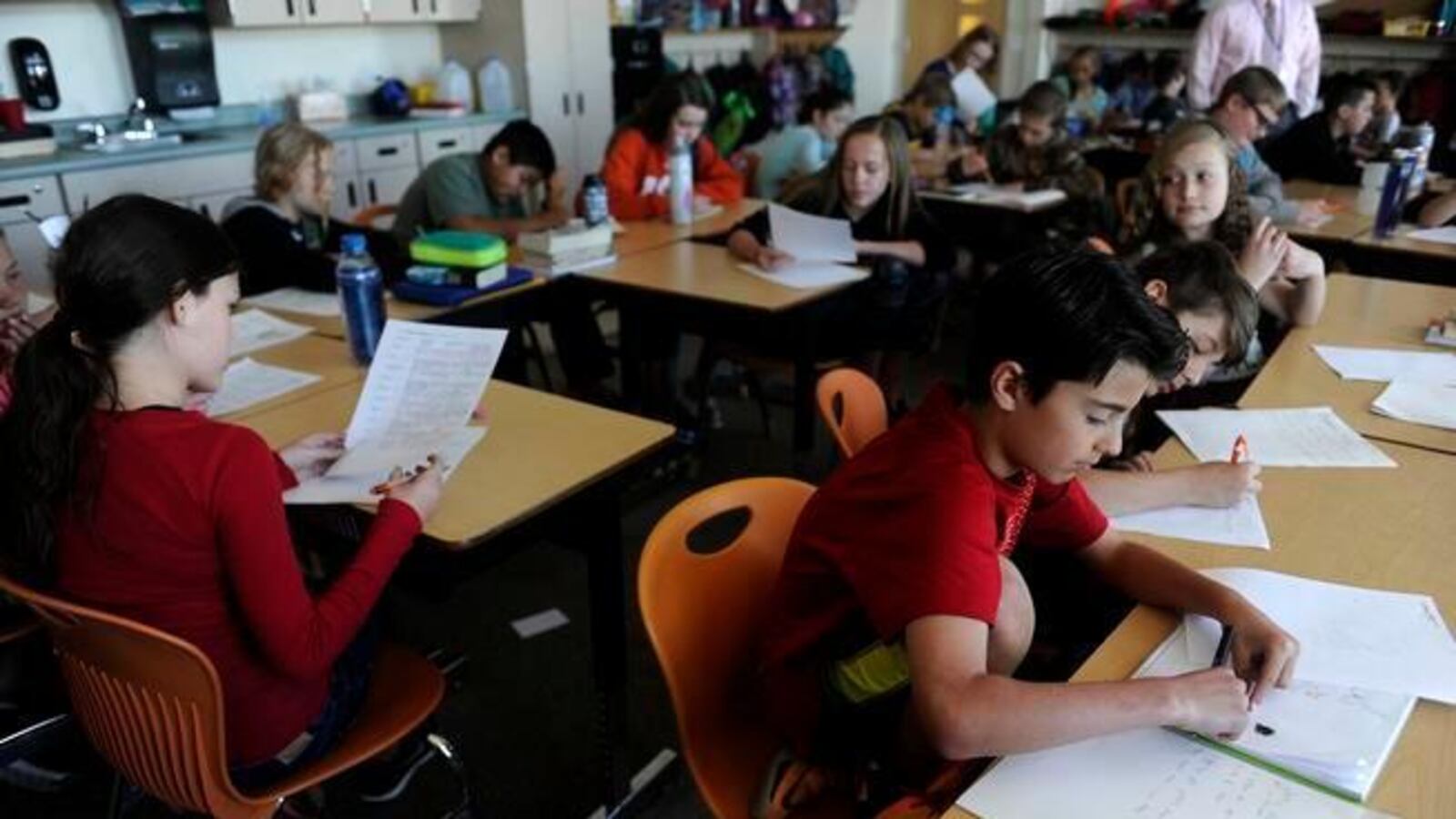Colorado fourth-graders won’t be asked to demonstrate their understanding of the possible benefits of gun ownership as part of their unit on conflict resolution.
Republican members of the State Board of Education had proposed adding language to state standards that spoke to the benefits of gun ownership for self-defense. But on Wednesday they decided against pressing the issue with their Democratic colleagues. The discussion came at the tail end of months of work to update Colorado’s academic standards, including health and physical education standards. The state reconsiders these requirements every six years.
The new health standard in question says that Colorado students should be able to “demonstrate skills necessary to prevent a conflict from escalating to violence.” They should be able to describe situations that could escalate to violence, explain positive alternatives to using violence to resolve conflicts, and “explain the potential dangers of having weapons at home, in school, and in the community.”
But some board members felt that last requirement, an “evidence outcome” in the parlance of the state standards, was too one-sided. They said it was not appropriate to focus only on the dangers of firearms — since parents might have guns at home, security officers might have guns at school, and police have guns in the community. The previous health standards talk about conflict resolution but are largely silent on the issue of firearms.
Board member Deb Scheffel suggested adding to the health standard the phrase “and benefits for self-defense” and board member Joyce Rankin, aiming for a middle ground, wanted to add just the phrase “and benefits.” Rankin said it was not appropriate to focus only on the dangers.
Under Colorado’s system of local control, the State Board of Education sets standards, but local districts maintain complete control over curriculum. They will decide how to implement the standard on conflict resolution, along with other aspects of the new health and physical education standards. There is no state assessment on these topics, as there is for math or reading.
Community norms around guns vary tremendously around the state, with some districts supporting students in advocating for more gun control even as some rural districts adopt policies to arm teachers.
Members of the committee that developed the new standards had already added an “inquiry question,” intended as guidance for teachers to prompt deeper discussion, in response to community feedback that reads: “How can the use of guns and other weapons be positive?” This question “could be used to guide a discussion about self-defense in the event a school community feels that it is appropriate.”
But the committee members, in a written statement responding to the proposed amendment on “benefits” of firearms, said that they do “not agree that adding self-defense to the evidence outcome is appropriate for fourth grade.”
Members in the characteristic red shirts of Moms Demand Action for Gun Sense, which advocates for stricter gun control laws, filled the small hearing room to tell board members that a positive message about guns had no place in elementary school curriculums.
“This is supposed to be a unit about conflict resolution and avoiding violence,” said Denver Public Schools teacher Rachel Barnes, a member of Moms Demand Action. “This is like having a unit on fire prevention and then asking: What is the benefit of playing with matches in a drought-stricken forest?”
Haven Coleman, a 12-year-old student at Slavens K-8 in Denver, said evidence doesn’t support the benefits of guns for self-defense,
“People exaggerate the benefits of having a gun and underestimate the consequences,” said Haven, who has previously spoken out publicly on climate change and social justice issues. “I don’t want to hear how guns are safe in people’s houses when kids are bringing those guns to school and killing us.”
Her younger sister, Anna, who is entering fourth grade, told Chalkbeat that talking about guns in a positive light scares her and invites violent escalation of conflicts.
“If their mom or dad has a gun, they’ll think it’s okay and they should bring it to school if they have a bully,” Anna said. “They’re telling us that it’s how you solve conflicts, that you’ll definitely win.”

And Deronn Turner, the parent of four former Denver Public Schools students and a member of Our Voice, Our Schools, said putting the benefits of guns into a state standard is “silly” when children of color don’t have adequate access to curriculum that teaches their history or to teachers of color.
“If we can’t even teach children about their own history, why would we put something in the curriculum about the benefits of guns?” she asked.
With Democrats holding a majority on the state board, the amendment was not likely to gain enough support to pass. No member made a motion to change the standards. On a 4-3 party line vote, with every Republican voting no, the Colorado State Board of Education adopted the new health standards without any language about the benefits of guns, but with the prompt to ask students how guns might be positive.
Rankin said that if schools only talk about dangers, that has the potential to scare children unnecessarily. She supports language in the standards that urges younger children to not touch and tell an adult if they find a gun, but she said any other mention of guns should wait until high school and be accompanied by a discussion of the Second Amendment.
Republican board members said they also think the health standards focus too much on mental and emotional health, and not enough on physical health, particularly obesity.

